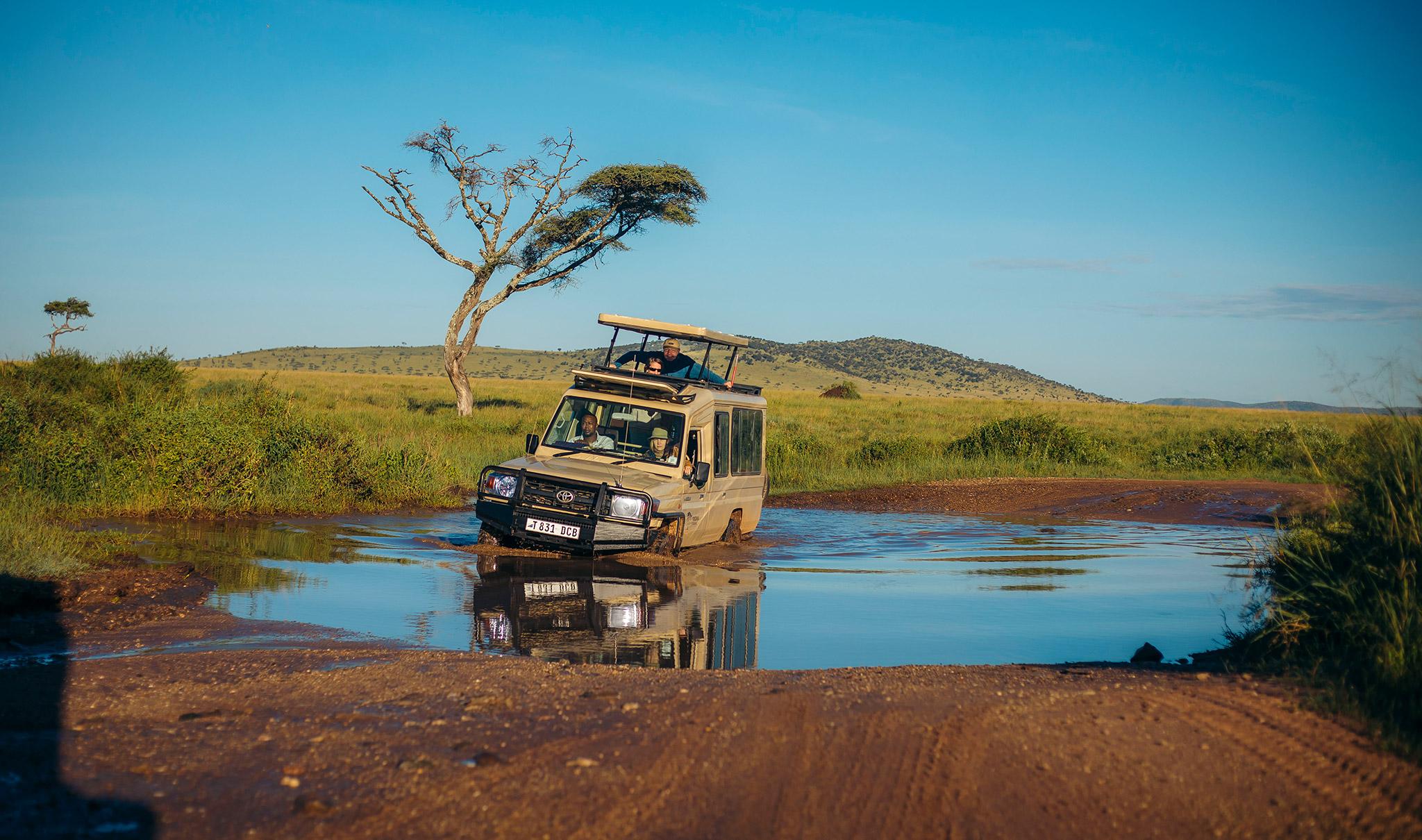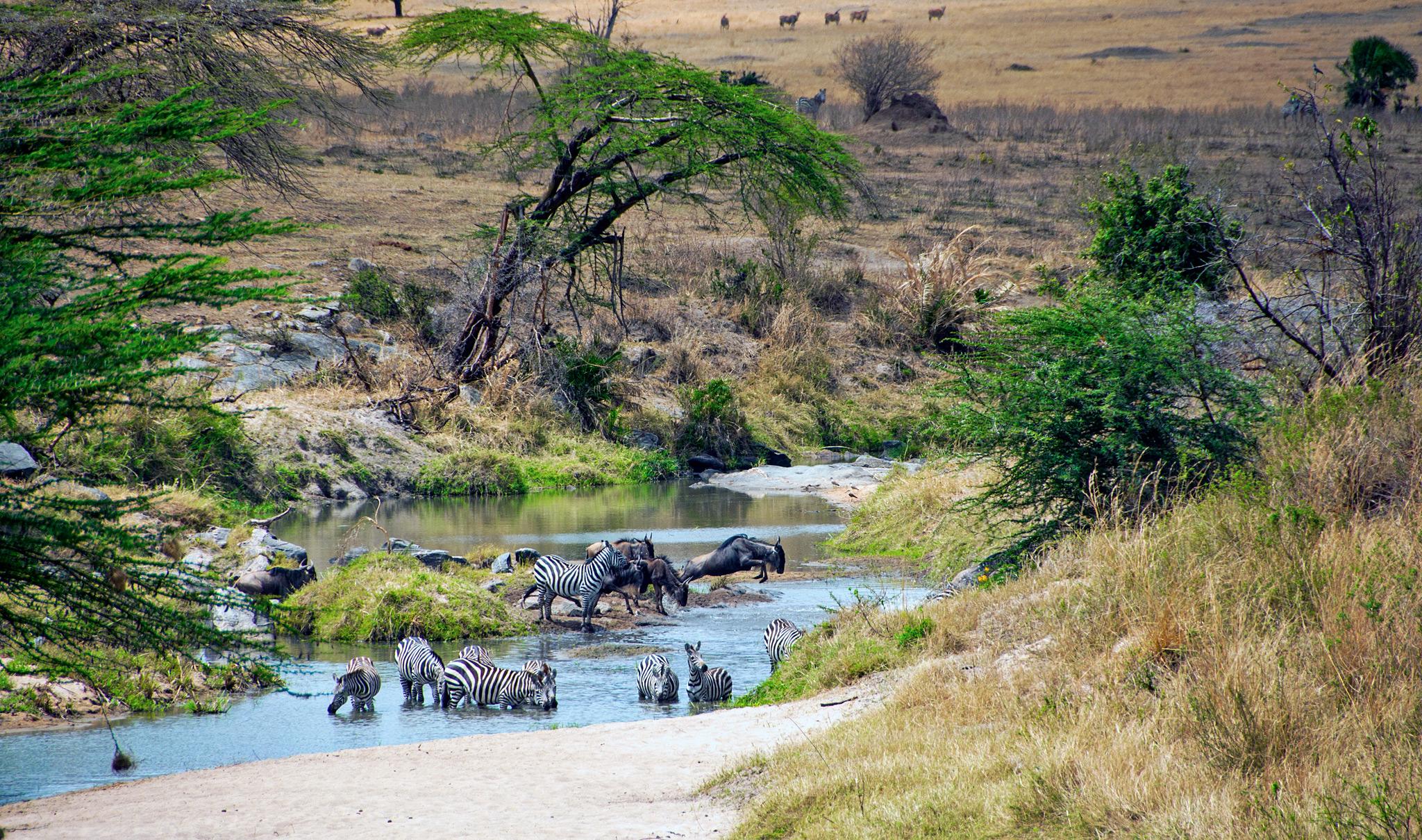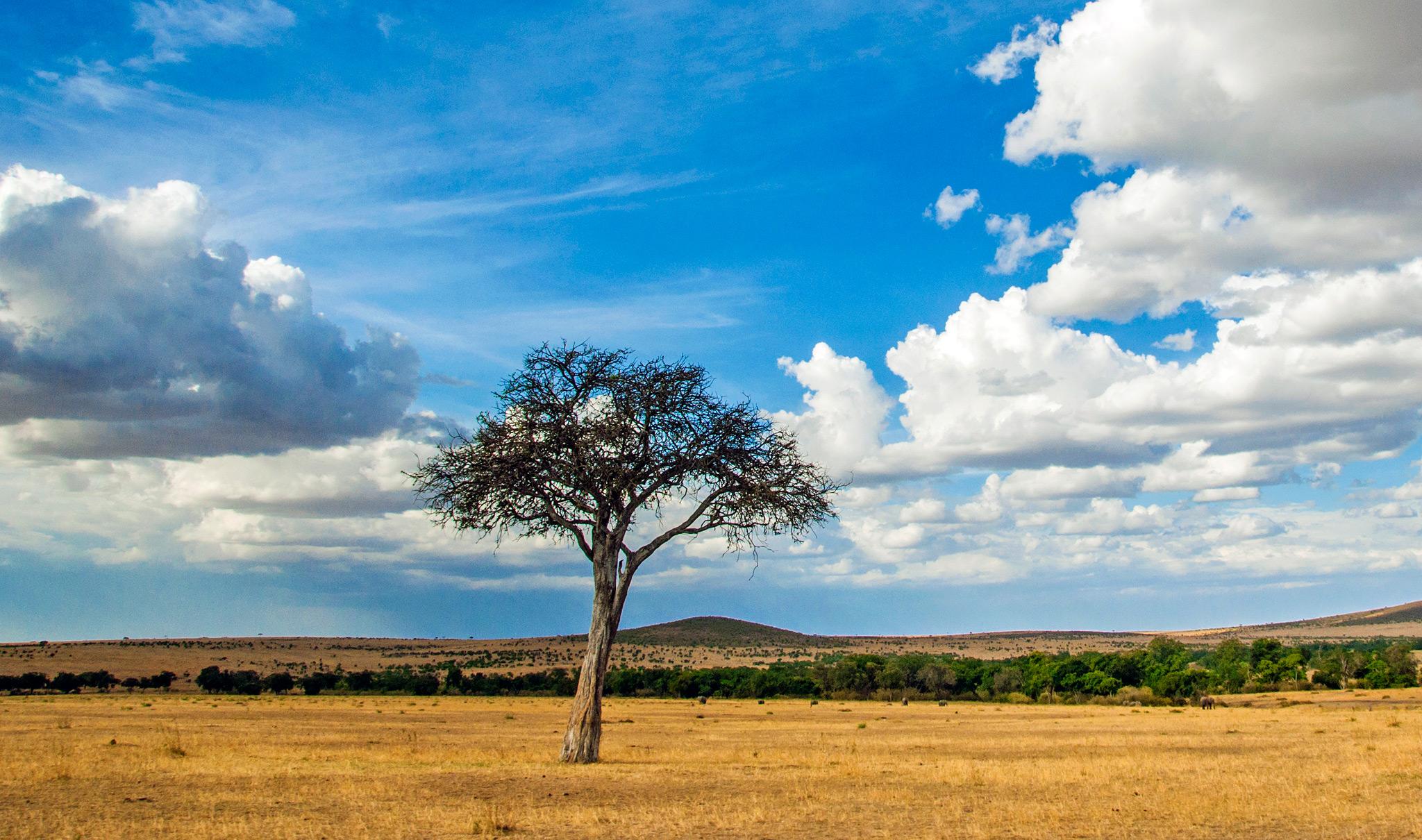Tanzania’s long rains from March to May bring an almost daily display of passing thunderstorms, creating dramatic storm-filled landscapes. While the dense vegetation may make it difficult to spot wildlife and some areas of the national parks may be inaccessible, the low season provides opportunities to benefit from lower rates and make last-minute bookings. For first-time safari-goers hoping to spot as many animals as possible, it’s best to avoid travelling to Tanzania in April and May; instead, refer to our best time to visit guide. But for those who have already experienced a safari and desire to soak in the expansive green landscapes and dramatic vast skies with fewer visitors, April and May are great and underappreciated months to visit.
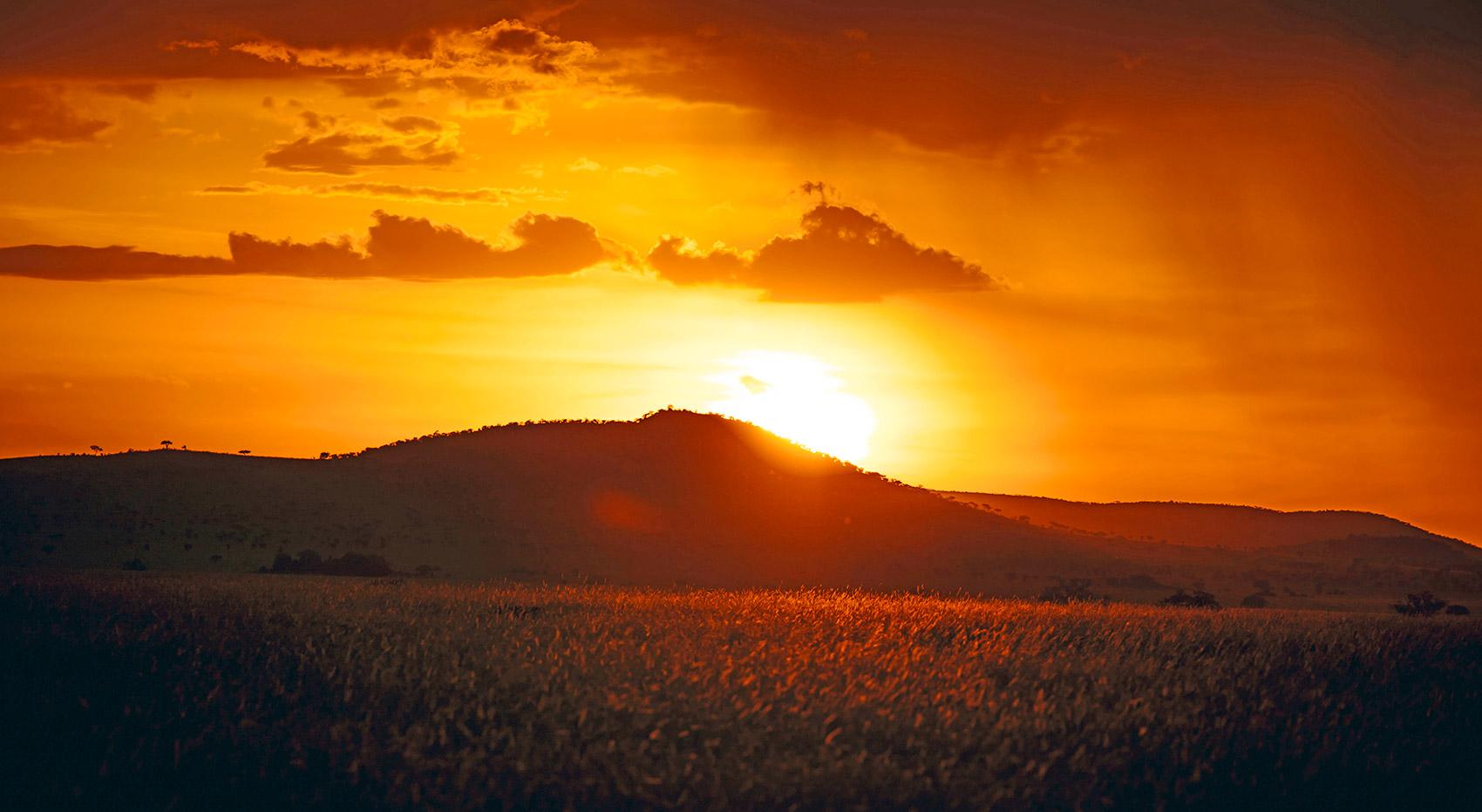
What is the weather like in Tanzania in April and May?
The good news is that Tanzania has no winter or summer. Instead, due to Tanzania’s tropical climate, it experiences two rainy and two dry seasons. The bad news is that April and May are two months during the long rains.
March is the start of the three-month ‘long rains’. During this period, the southeast trade winds bring heavily laden, moist air inland. As a result, it rains daily, often arriving in heavy yet quick-to-pass thunderstorms. April receives the highest amount of rainfall, followed by May.
The long rains in Tanzania have an impact on the temperature. In February, the average maximum temperature reaches its highest point of around 30°C (86°F) during the afternoons. As the months go by, the temperature gradually decreases, and by May, it can drop as low as 22°C (71°F) during the day.
The increased rainfall does have a benefit. April and May are two months in Tanzania’s “green season”, from November to May, characterised by lush green landscapes. Go where 4x4s cannot by floating over sodden landscapes on a magical balloon safari that concludes with a champagne breakfast. Unfortunately, poor weather conditions and slippery paths make trekking Mount Kilimanjaro unsuitable.
At high altitudes, such as Ngorongoro Conservation Area, you will find yourself at 2300m above sea level, where the temperatures drop dramatically at night and heavy rain is likely.
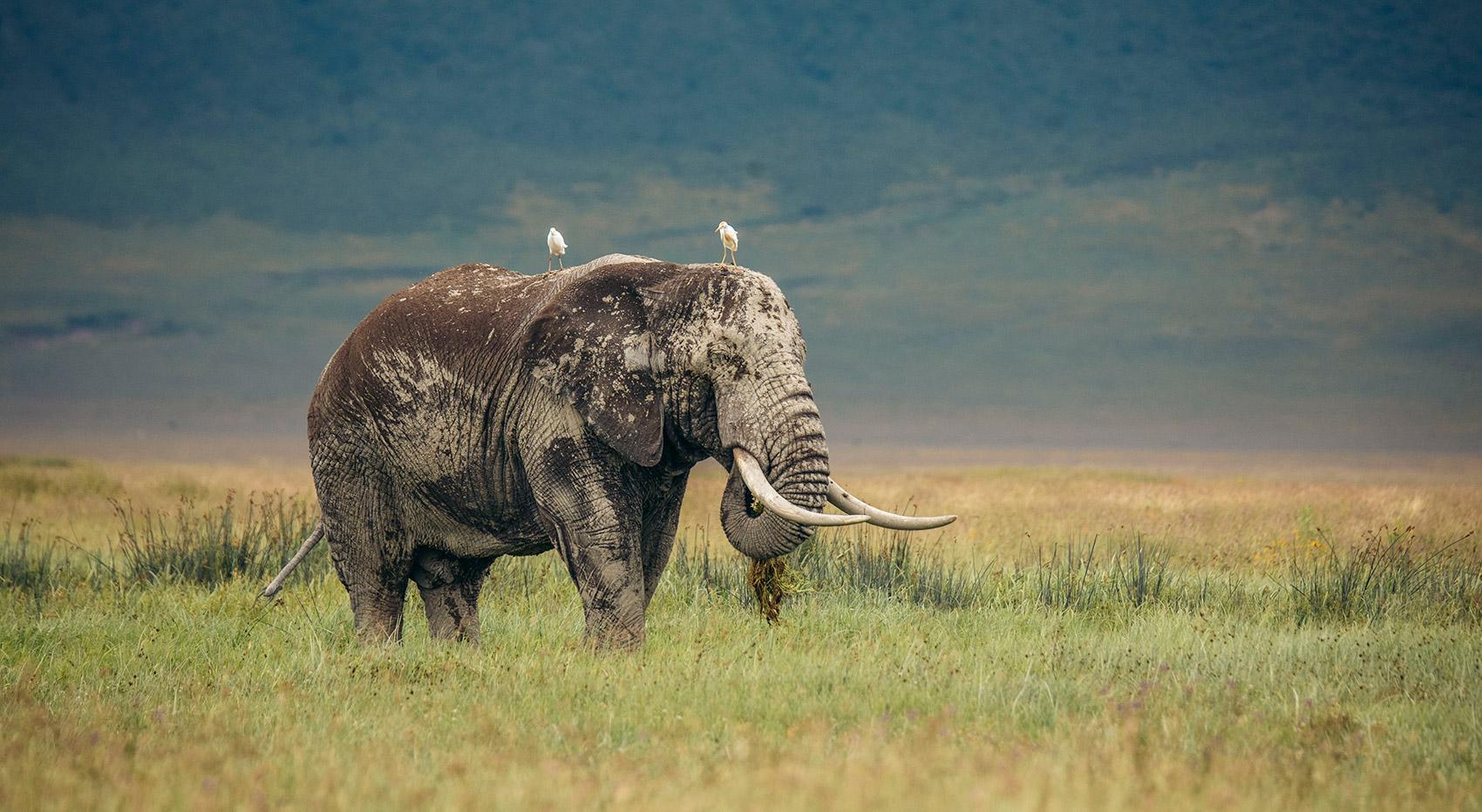
On the Zanzibar archipelago, April and May are two of the wettest months. Water visibility, which reaches up to 30m during January and February, is significantly reduced during the long rains.
What are the average temperatures in Tanzania in April and May?
As Tanzania has a tropical climate, daytime temperatures throughout the year remain above 20°C (68°F). In Tanzania in April and May, average maximum temperatures on the coast range from 31°C (87°F) to 32°C (90°F), and inland, maximum average temperatures fall to 22°C (71°F) to 25°C (77°F). At the same time, high-altitude areas are colder, with the maximum average ranging from 21°C (70°F) to 23°C (73°F).
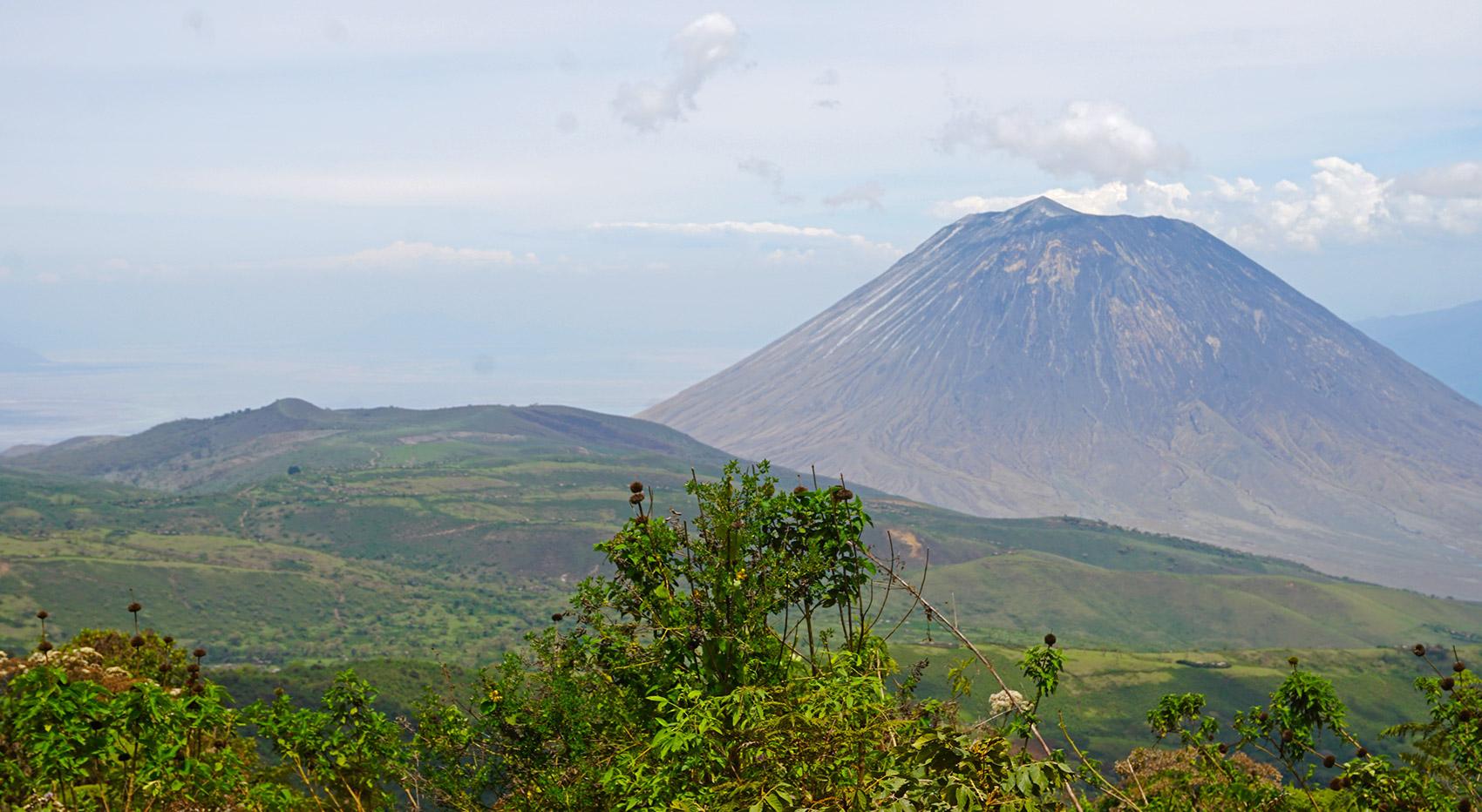
Is it worth going on safari in Tanzania in the low season?
Is a safari in Tanzania in April and May during the long rains for me?
This is a question we often receive. We are excited to share with you why April and May can be, for some, an excellent time for a safari in Tanzania. So, who is a rainy season safari for?
Return visitors to East Africa can attest that Tanzanian hospitality is world-class. Upon arriving at your accommodation, you are greeted with a warm welcome that gives you a sense of familiarity – like coming home. It’s no surprise that many friendships are formed during safaris and that guests consider their interactions with the guides, hosts, and camp teams as one of the highlights of their safari. So, Tanzania in April and May is ideal for reconnecting with old friends, visiting your favourite lodges, and enjoying some downtime in nature without the crowds.
Landscape photographers will want to spend every second of daylight under the enormous African skies during April and May. Low golden light illuminates vast green landscapes. While passing, thunderstorms create towering cloud formations that add to the beauty of the dramatic scenery. Moreover, the crisp air allows onlookers to see every detail of geological landscapes, appearing like scars from afar and creating a deeper sense of perspective. Witnessing landscapes swollen with life-giving water creates a sense of new beginnings, and it is a wonderful time to be in the wilderness.
Two safaris that are a great experience in April and May:

Impressive Tanzania
Places Tarangire National Park, Serengeti National Park, Ngorongoro Crater
from 2,040 USD per person sharing

Tanzania Classic
Places Tarangire National Park, Serengeti National Park, Ngorongoro Crater
from 1,770 USD (based on 7 persons)
Birdwatchers will have April on their calendars as it is the nesting season in Tanzania. Visitors can see numerous resident and migratory birds, and it is a great time to book a tailor-made birdwatching safari.
Nature lovers will have a great time in the Serengeti National Park even during the rainy season. Not only will you share the experience with far fewer other tourists than during the high season. There is also a crucial part of the wildebeest migration happening – the rut or mating season.
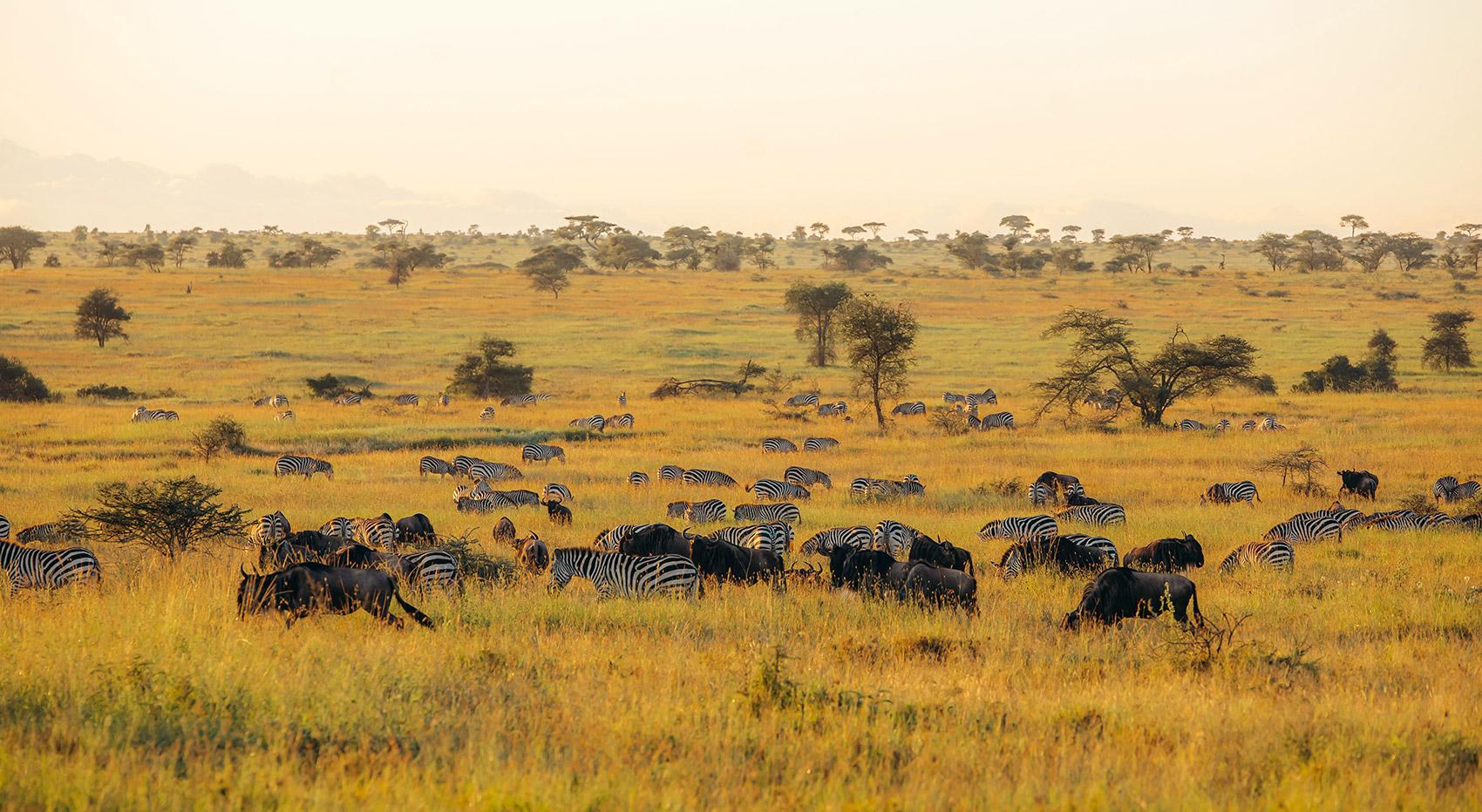
Every year, 1.5 million wildebeest undertake a 1000 km journey across the Serengeti National Park and Kenya’s Masai Mara National Reserve in search of fresh grass. This is known as the Great Wildebeest Migration, which consists of several fascinating stages throughout the year.
By April, the wildebeests that have spent the last three months in southern Serengeti will start their northward journey towards Central Serengeti. It is a fantastic sight to behold as they form long columns as far as the eye can see.
Towards the beginning of May, the wildebeest rut or mating season starts, when males compete for a group of females. As the wildebeest march northwards with their young calves, dominant males clash heads to win control over a herd. Often wholly distracted, they can be taken prey by advantageous predators. By mid-May, the wildebeest begin to gather in Western Serengeti, and the river crossing at the Grumeti River begins.
Locational highlights to see and do in Tanzania in April and May:
- Arusha National Park and Mkomazi National Park offer beautiful green landscapes with Mount Kilimanjaro in the background.
- The Ruaha National Park will be home to lush Baobab trees in full leaf, a beautiful sight.
- For those looking for a city getaway, the ancient African city of Stone Town in Zanzibar is a great option.
- If you travel a short distance north from Dar es Salaam, you can also visit Bagamoyo, another ancient port renowned today for dhow-boat building.
What is the cost of visiting Tanzania in the low season?
The low season in Tanzania is from March to May, during the long rains. The national park entry fees remain the same, but it is the ideal time to find reduced prices for everything from flights to accommodation. Be aware that accommodation in the north tends to remain open, while in the south and west, the inaccessibility of roads may force some places to close. Although the long rains can restrict access to certain parts of Tanzania and make wildlife viewing more challenging, the lush green landscapes with fewer tourists are ideal for return visitors who seek solitude in the wilderness.

What to wear in Tanzania in April and May
April and May are the wettest months of the year. Here are some packing tips:
- Bring a light raincoat and a small umbrella.
- Pack several light layers to take off as it warms up. Light colours with long sleeves and trousers protect you from biting insects.
- Pack a warm fleece.
- On game drives, avoid wearing camouflage or bright colours.
- Pack a small rucksack for guidebooks, water, binoculars, hats, and sunglasses.
- Bring closed shoes for game drives and at night.
- Pack something smart to wear for a classic safari dinner.
- Tanzania is a culturally diverse country, and if you plan to visit Zanzibar, please dress modestly by covering your shoulders and knees in public places as a sign of respect to the Islamic culture, which is practised by 98% of the population.
If you are unsure about the best time to travel to Tanzania get in touch with us today – we share our experience on what to do and what to see in Tanzania in April and May, and during any other month of the year.
 on Tripadvisor
on Tripadvisor

